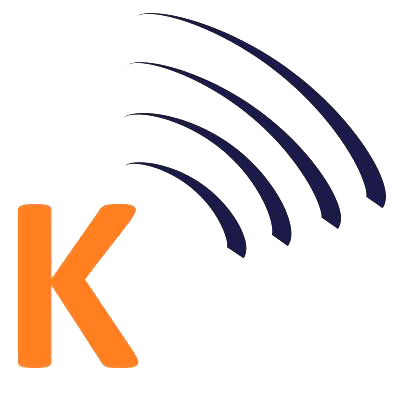Pe Application of the K-Means Algorithm in Grouping Households by Province and Ownership Status of Owned Houses
DOI:
10.33395/sinkron.v5i2.10883Keywords:
Household, Grouping, Community, K-Means Algorithm, OwnershipAbstract
The house is a place or container to protect people from hot or cold air. A household is a group of people who gather in a place and share food, shelter, and others. People who live in a house, some live in a boarding house and some already have their own homeownership status. Research conducted by this author discusses the Application of Household Clustering by Province and Ownership Status of Owned Houses using K-Means Algorithm. The research data is sourced from the National Statistics Agency. The data used in doing this is the data on the percentage of households by province and the status of self-owned house ownership in 1999-2019. The data consists of 34 provinces. The variables of this study are based on the average number of percentages of households by province and ownership status of self-owned houses. The data clustering will be carried out by dividing it into 3 clusters, namely the high level of self-owned house ownership status, the moderate level of self-owned house ownership status, and the low level of self-owned house ownership status. The results of this study are based on the Household index by Province and Ownership Status of Owned Houses, as many as 12 provinces with high self-owned house ownership, namely 86,14, 21 provinces with medium self-owned house ownership, namely 75,11, and 1 province with low self-owned house ownership, namely 51,61. The existence of this research can make people more open-minded about having their own house with ownership status.
Downloads
References
Agustin, F. E. M. (2015). Implementasi Algoritma K-Means Untuk Menentukan Kelompok Pengayaan Materi Mata Pelajaran Ujian Nasional (Studi Kasus: Smp Negeri 101 Jakarta). Jurnal Teknik Informatika, 8(1), 73–78. https://doi.org/10.15408/jti.v8i1.1938
Darmi, Y., & Setiawan, A. (2016). Penerapan metode clustering k-means dalam pengelompokan penjualan produk. Jurnal Media Infotama Universitas Muhammadiyah Bengkulu, 12(2), 148–157.
Irfiani, E., & Rani, S. S. (2018). Algoritma K-Means Clustering untuk Menentukan Nilai Gizi Balita. Jurnal Sistem Dan Teknologi Informasi (JUSTIN), 6(4), 161. https://doi.org/10.26418/justin.v6i4.29024
Kamila, I., Khairunnisa, U., & Mustakim, M. (2019). Perbandingan Algoritma K-Means dan K-Medoids untuk Pengelompokan Data Transaksi Bongkar Muat di Provinsi Riau. Jurnal Ilmiah Rekayasa Dan Manajemen Sistem Informasi, 5(1), 119. https://doi.org/10.24014/rmsi.v5i1.7381
Nur, F., Zarlis, M., & Nasution, B. B. (2017). Penerapan Algoritma K-Means Pada Siswa Baru Sekolahmenengah Kejuruan Untuk Clustering Jurusan. InfoTekJar (Jurnal Nasional Informatika Dan Teknologi Jaringan), 1(2), 100–105. https://doi.org/10.30743/infotekjar.v1i2.70
nurul rohmawati, sofi defiyanti, mohamad jajuli. (2015). Implementasi Algoritma K-Means Dalam Pengklasteran Mahasiswa Pelamar Beasiswa. Jitter 2015, I(2), 62–68.
Nurzahputra, A., Muslim, M. A., & Khusniati, M. (2017). Penerapan Algoritma K-Means Untuk Clustering Penilaian Dosen Berdasarkan Indeks Kepuasan Mahasiswa. Techno.Com, 16(1), 17–24. https://doi.org/10.33633/tc.v16i1.1284
Ong, J. O. (2013). Implementasi Algotritma K-means clustering untuk menentukan strategi marketing president university. Jurnal Ilmiah Teknik Industri, vol.12, no(juni), 10–20.
Prayoga, Y., Tambunan, H. S., & Parlina, I. (2019). Penerapan Clustering Pada Laju Inflasi Kota Di Indonesia Dengan Algoritma K-Means. BRAHMANA: Jurnal Penerapan Kecerdasan Buatan, 1(1), 24–30. https://doi.org/10.30645/brahmana.v1i1.4
R Sianipar, K. D., Wanti Siahaan, S., Siregar, M., & Fikrul Ilmi Zer, P. R. (2020). Penerapan Algoritma K-Means Dalam Menentukan Tingkat Kepuasan Pembelajaran Online Pada Masa Pandemi Covid-19. Jurnal Teknologi Informasi, 4(1), 101–105.
Rony, S. (2016). Penerapan Data Mining Menggunakan Algoritma K-Means Clustering Untuk Menentukan Strategi Promosi Mahasiswa Baru ( Studi Kasus : Politeknik Lp3i Jakarta ). Jurnal Lentera Ict, 3(1), 76–92.
Sadewo, M. G., Windarto, A. P., & Hartama, D. (2017). Penerapan Datamining Pada Populasi
Daging Ayam Ras Pedaging Di Indonesia Berdasarkan Provinsi Menggunakan K-Means Clustering. InfoTekJar (Jurnal Nasional Informatika Dan Teknologi Jaringan), 2(1), 60–67. https://doi.org/10.30743/infotekjar.v2i1.164
Sari, R. W., Wanto, A., & Windarto, A. P. (2018). Implementasi Rapidminer Dengan Metode K-Means ( Study Kasus : Imunisasi Campak Pada Balita Berdasarkan Provinsi ). 2, 224–230.
Sihombing, E. G. (2017). Klasifikasi Data Mining pada Rumah Tangga Menurut Provinsi dan Status Kepemilikan Rumah Kontrak/Sewa Menggunakan K-Means Clustering Method. Journal of Computer Engineering System and Science (CESS), 2(2), 74–82.
Sulastri, H., & Gufroni, A. I. (2017). Penerapan Data Mining Dalam Pengelompokan Penderita Thalassaemia. Jurnal Nasional Teknologi Dan Sistem Informasi, 3(2), 299–305. https://doi.org/10.25077/teknosi.v3i2.2017.299-305
Wardhani, A. K. (2016). K-Means Algorithm Implementation for Clustering of Patients Disease in Kajen Clinic of Pekalongan. Jurnal Transformatika, 14(1), 30. https://doi.org/10.26623/transformatika.v14i1.387
Downloads
How to Cite
Issue
Section
License
Copyright (c) 2021 Kristin Sianipar, Septri Siahaan, Indra Gunawan

This work is licensed under a Creative Commons Attribution-NonCommercial 4.0 International License.







 Moraref
Moraref PKP Index
PKP Index Indonesia OneSearch
Indonesia OneSearch OCLC Worldcat
OCLC Worldcat Index Copernicus
Index Copernicus Scilit
Scilit
























